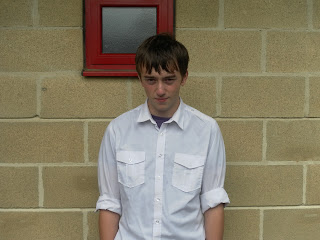What is continuity?
In fiction, continuity (also called time-scheme) is consistency of the characteristics of persons, plot, objects, places and events seen by the reader or viewer over some period of time. It is of relevance to several media.
Continuity is particularly a concern in the production of film and television due to the difficulty of rectifying an error in continuity after shooting has wrapped up.
http://en.wikipedia.org/wiki/Continuity_(fiction)
Continuity is where plot and visual consistency stay in order. For example,
In the left picture we can see that Frodo's scar changes from one side of his face to the other, where as in the right picture we can see that the characters t-shirt changes colour between shots. The reason why its important to keep continuity is because it can confuse the viewer and also break the suspension of disbelief, meaning that the audience becomes detached from the film and possibly loses interest.
One shot that we have to pay special attention to in terms of continuity is the match on action shot. We need to pay special attention to this shot because if we don't it is very easy for the shot to fail by breaking continuity.
The 180° Rule:
In film making, the 180° rule is a basic guideline that states that two characters (or other elements) in the same scene should always have the same left/right relationship to each other. If the camera passes over the imaginary axis connecting the two subjects, it is called crossing the line. The new shot, from the opposite side, is known as a reverse angle.
http://en.wikipedia.org/wiki/180_degree_rule
| http://en.wikipedia.org/wiki/180_degree_rule |
We especially need to stick by this rule when filming shot reverse shots, during dialogue.












